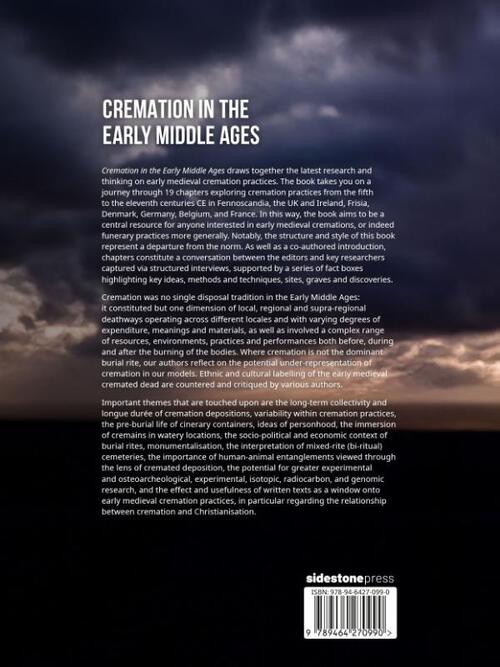95.00
1 - 2 Weken
Cremation in the Early Middle Ages draws together the latest research and thinking on early medieval cremation practices. The book takes you on a journey through 19 chapters exploring cremation practices from the fifth to the eleventh centuries CE in Fennoscandia, the UK and Ireland, Frisia, Denmark, Germany, Belgium, and France. In this way, the book aims to be a central resource for anyone interested in early medieval cremations, or indeed funerary practices more generally. Notably, the structure and style of this book represent a departure from the norm. As well as a co-authored introduction, chapters constitute a conversation between the editors and key researchers captured via structured interviews, supported by a series of fact boxes highlighting key ideas, methods and techniques, sites, graves and discoveries. Cremation was no single disposal tradition in the Early Middle Ages: it constituted but one dimension of local, regional and supra-regional deathways operating across different locales and with varying degrees of expenditure, meanings and materials, as well as involved a complex range of resources, environments, practices and performances both before, during and after the burning of the bodies. Where cremation is not the dominant burial rite, our authors reflect on the potential under-representation of cremation in our models. Ethnic and cultural labelling of the early medieval cremated dead are countered and critiqued by various authors. Important themes that are touched upon are the long-term collectivity and longue durée of cremation depositions, variability within cremation practices, the pre-burial life of cinerary containers, ideas of personhood, the immersion of cremains in watery locations, the socio-political and economic context of burial rites, monumentalisation, the interpretation of mixed-rite (bi-ritual) cemeteries, the importance of human-animal entanglements viewed through the lens of cremated deposition, the potential for greater experimental and osteoarcheological, experimental, isotopic, radiocarbon, and genomic research, and the effect and usefulness of written texts as a window onto early medieval cremation practices, in particular regarding the relationship between cremation and Christianisation.

- : Sidestone Press Academics
- : Sidestone Press Academics
- : 9789464271003
- : Engels
- : Hardcover
- : 300
- : december 2024
- : 700
- : 215 x 140 x 27 mm.
- : Archeologie; Europese geschiedenis: middeleeuws tijdperk, middeleeuwen

